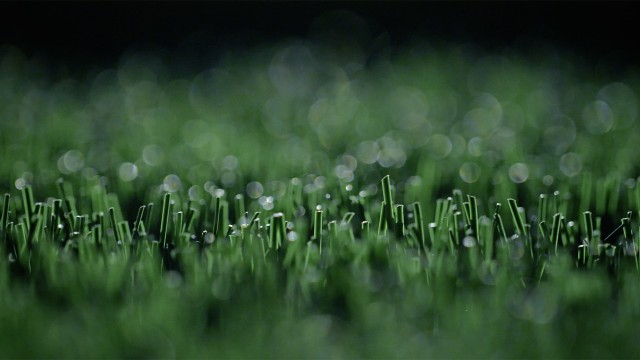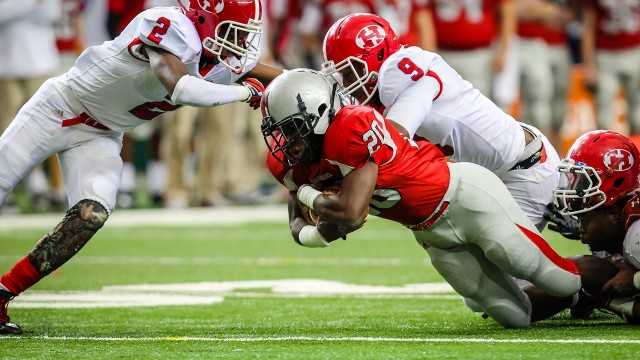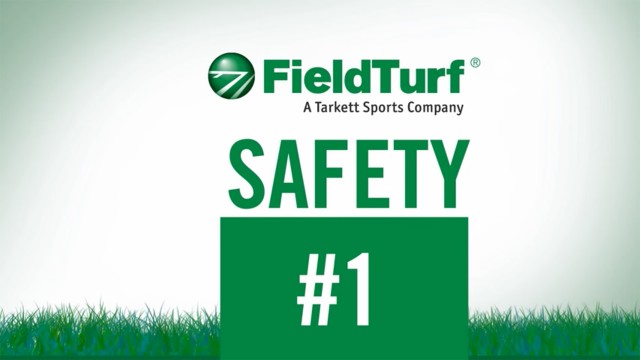Qualsiasi azienda può asserire di offrire prodotti in erba sintetica sicuri.
MA QUANDO PARLIAMO DI SICUREZZA COMPROVATA PER I TUOI FIGLI E PER GLI ATLETI, L’AZIENDA DI RIFERIMENTO È UNA SOLA: FIELDTURF.
Non è possibile impedire gli infortuni, ma è possibile limitarne l’entità
La sicurezza degli atleti è da sempre la nostra principale priorità. La nostra continua ricerca dell’innovazione ci spinge a progettare i sistemi in erba sintetica più avanzati del settore. Anche se nessuno sport è completamente a prova di infortuni, continuiamo a escogitare nuove soluzioni per ridurre il rischio e la gravità degli incidenti. La nostra attenzione alla sicurezza ha prodotto numerose innovazioni e miglioramenti per la riduzione degli infortuni. Ciò significa che abbiamo i prodotti e l’esperienza necessari per rendere ogni campo da gioco il più sicuro possibile per gli atleti. Una ricerca pluriennale indipendente convalida i nostri sforzi per fornire campi da gioco il più sicuri possibile.
FOOTBALL COLLEGIALE
FIELDTURF O ERBA NATURALE
Studio triennale
I sistemi FieldTurf hanno portato al:
- 13% in meno di stiramenti/strappi muscolari
- 11% in meno di commozioni cerebrali
- 31% in meno di strappi dei legamenti
- 24% in meno di distorsioni alle caviglie
- 21% in meno di infortuni gravi
- 23% in meno di infortuni su una superficie vecchia di 4-8 anni+
Football liceale
FieldTurf o erba naturale
Studio quinquennale
I sistemi FieldTurf hanno portato al:
- 44% in meno di infortuni con commozione cerebrale
- 43% in meno di infortuni con lesione del legamento crociato anteriore
- 25% in meno di tempo perso per lesioni a lungo termine (22+ giorni)
- 16% in meno di tempo perso per lesioni a breve termine (1-2 giorni)
HIGH SCHOOL FOOTBALL
FIELDS WITH SHOCK PADS VS FIELDS WITHOUT
7-year study
Fields without pads led to:
- 53% less player-to-turf collision injuries
- 39% less shoulder girdle trauma
- 63% less lower leg injuries
- 73% less neck trauma
When are shock pads recommended?
There are some situations where a shock pad is highly recommend. When installing light-weight infill systems, common with alternative / natural infills like cork, coconut and/or olive, there isn’t enough material in the system to provide the necessary shock absorption. To meet the needed industry safety requirements, a shock pad is added under the system to provide the adequate performance.
HIGH SCHOOL FOOTBALL
heavyweight infill VS other infill weight surfaces
7-year study
Systems with >9 lbs per square foot of infill compared to all other infill weight surfaces led to:
- 19%-29% lower incidence of total injuries
- 35%-55% lower incidence of Substantial injuries
- 19%-26% lower incidence of severe injuries
- 32%-47% lower incidence of player-to-turf injuries
- 17%-22% lower incidence of Ligament Sprains and Tears
- 58%-63% lower incidence of injuries on surfaces aged 8+ years, vs systems with 0-5.9 lbs per square foot
NATIONAL FOOTBALL LEAGUE
FIELDTURF VS NATURAL GRASS & COMPETING SYSTEMS
4-year study
ACL Injury Rate per Team Games Played:
- .048 FieldTurf
- .050 Natural Grass
- .053 Competing Turf Systems
NATIONAL FOOTBALL LEAGUE
FIELDTURF VS NATURAL GRASS
7-year study
Achilles Tendon Injuries:
When analyzing the rates of achilles tendon tear while comparing ground surfaces (grass and artificial turf), we revealed no significant difference in tear rates.
COLLEGE men's soccer
FIELDTURF VS NATURAL GRASS
6-year study
FieldTurf systems led to:
- 25% Fewer Total Injuries
- 20% Fewer Severe Injuries
- 33% Fewer Concussions
- 15% Fewer Injuries due to player-to-surface collisions
COLLEGE women's soccer
FIELDTURF VS NATURAL GRASS
5-year study
FieldTurf systems led to:
- 11% Fewer Total Injuries
- 33% Fewer Severe Injuries
- 57% Fewer Injuries on Surfaces 8+ years old
- 17% Fewer Injuries in Rain-Field Conditions
United Soccer League, League 1
Artificial Turf vs Grass
Three Seasons - 2020-2022
Study concluded: Overall, the incidence of injuries per athlete exposure was significantly lower on artificial turf than natural grass. Injuries subdivided into location demonstrate statistically lower rates of head/neck, upper limb, and lower limb injuries on artificial turf. Additionally, with regards to type of injury, the rate of contusions and central/peripheral nervous system injuries were statistically lower on artificial turf.
Amateur Soccer
Artificial Turf vs Grass
Skin Abrasions Due to Sliding on Playing Surface
Study concluded: No evidence of more skin related traumatic injuries when a slide was performed on artificial turf compared to natural grass.
MLS Soccer
Erba sintetica o erba naturale
Studio quadriennale
Conclusioni dello studio: Il tasso complessivo di infortuni sull’erba sintetica era “non inferiore”, o equivalente, a quello sull’erba naturale.
College Men's & Women's Soccer
Artificial Turf VS Natural Grass
10-year study
Study concluded: NCAA soccer players who practice on natural grass have increased risk of ACL injury (8.67 times more likely) compared with the risk of those practicing on an artificial surface, regardless of sex or NCAA division of play. No difference in risk of ACL injury between playing surfaces was detected during matches.
Effects of Playing Surface on Physical, Physiological and Perceptual Responses
artificial vs grass
Study concluded:
- An improved physical performance on artificial turf compared to natural grass.
- Performance tasks incorporating greater reliance on agility and change of direction ability are more likely to be enhanced on artificial turf compared to natural grass.
- The improved physical performance on artificial turf was accompanied by improved perceptual and some blood biochemistry (Lac, Neu and LYM) responses.
Italian Major League - Soccer
Artificial Turf vs Grass
One Season of Division I Play
Study concluded: No difference in injury risk on natural grass and artificial turf in elite professional soccer athletes.
Pitch Impact Markers of Fatigue, Recovery and Readiness to Play
artificial vs grass
Study concluded:
- Players covered significantly more distance per minute on artificial turf (222.59 ± 18.93 meters/min) compared to natural grass (215.89 ± 17.80 meters/min)
- Countermovement jump (CMJ) parameters and subjective wellness questionnaires (fatigue, sleep quality, muscle soreness, stress, and mood) showed no significant differences based on pitch surface.
- Artificial turf pitches do not elicit more fatigue, impede recovery, or impact readiness to play, though they may lead to small differences in activity patterns and styles of play.
College Football
FieldTurf vs Natural Grass
Study concluded:
- The use of a heavyweight artificial infill system [>9 lbs. of infill /sq. ft.]in collegiate football competition was associated with a reduction in the incidence and severity of surface-related sport trauma, resulting in a significantly lower incidence of imaging and surgical procedures when compared with natural grass fields.



